The Chicago Bears have had some great players over the years, and as a result the team has retired a total of 14 jersey numbers, the most of any club in NFL history.
In fact, the Bears retired so many numbers that the team is no longer retiring jerseys, with former tight end Mike Ditka having the distinction of having the last retired number in team history.
So just who are the players who have been honored by the Bears with a jersey retirement? To answer that question, here are the 14 players whose jersey numbers adorn banners at Soldier Field.
3 – Bronko Nagurski
One of the charter members of the Pro Football Hall of Fame in 1963, Nagurski had a stellar nine-year career with the Bears, appearing in 97 games and rushing for 2,778 yards and 25 touchdowns. Nagurski originally retired after the 1937 season, but after the Bears lost a slew of players to World War II service, he came out of retirement for eight games in 1943, rushing for 84 yards and a touchdown.
5 – George McAfee
A halfback, McAfee scored seven touchdowns in his first two NFL seasons, but after the 1941 season he enlisted in the United States Navy. He didn’t return to the gridiron until 1945, and after playing three games each in 1946 and 1947 he returned to football full-time in 1948. He ended his career with 1,685 rushing yards and 21 touchdowns, and also had 11 receiving touchdowns. He was inducted into the Pro Football Hall of Fame in 1966.
7 – George Halas
Primarily known as a head coach and an owner of the Bears, Halas also played a bit during his career, scoring one rushing touchdown, six receiving touchdowns, and three total return touchdowns. As a result of his playing career and his stellar coaching career, Halas’ number 7 jersey was retired by the team. His initials also appear on the sleeves of the team’s jerseys.
28 – Willie Galimore
Galimore had a sparkling career with the Bears in the late 1950s and early 1960s, registering 26 rushing touchdowns and 10 more receiving touchdowns. His career was cut tragically short in 1964 when he was killed in a car accident in Rensselaer, Indiana at the age of 29.
His career was cut tragically short in 1964 when he was killed in a car accident in Rensselaer, Indiana at the age of 29.
34 – Walter Payton
When Payton retired in 1987, he was the NFL’s all-time leader in rushing yards, with 16,726, and he still holds Bears records for most career rushing touchdowns and receptions. He made nine Pro Bowls and was a First Team All-Pro member on five different occasions. He is also the only player in Bears history to win Associated Press MVP honors, doing so in 1977. He was elected to the Hall of Fame in 1993.
40 – Gale Sayers
The “Kansas Comet” had his career cut short by injuries, but in just seven years he made a huge impact on the franchise. He rushed for 4,956 career yards and 39 touchdowns and he hauled in 112 receptions for 1,307 yards and nine touchdowns in the passing game. He was a five-time First Team All-Pro, and made four Pro Bowls. He was inducted into the Hall of Fame in 1977.
41 – Brian Piccolo
Piccolo had a remarkable journey to the NFL, trying out for the Bears as a free agent and making the team in 1965.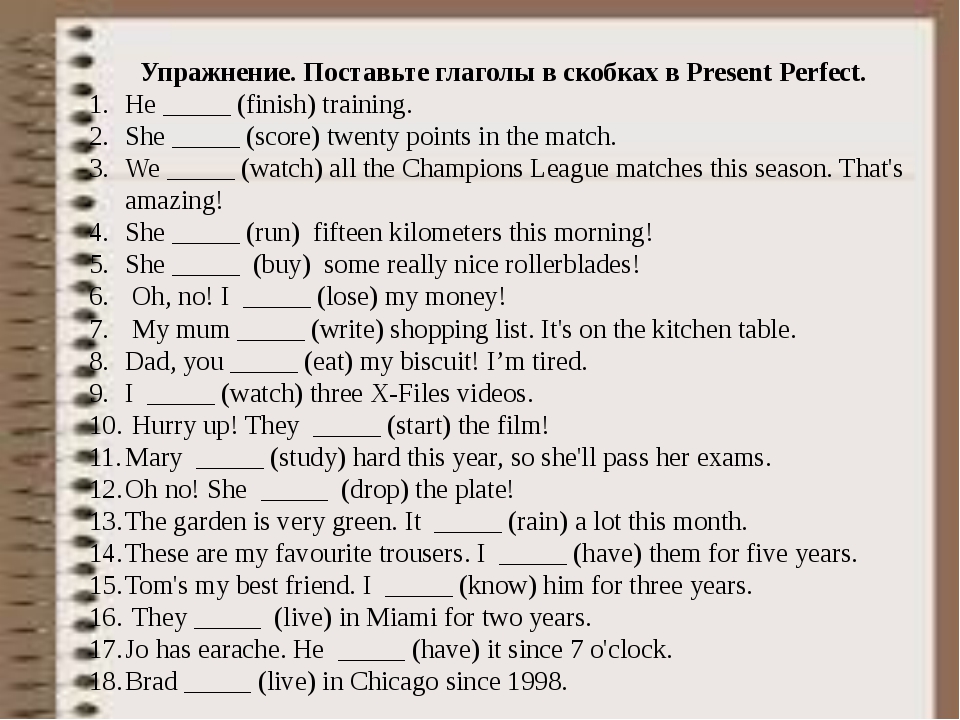 He made the main roster the next year, befriending Gale Sayers in the process. He ran for 450 yards and two touchdowns in 1968, and was promoted to a starting role. The following season, Piccolo was diagnosed with embryonal cell carcinoma, which had spread to his chest. The cancer then spread to other organs, and he passed away at the age of 26.
He made the main roster the next year, befriending Gale Sayers in the process. He ran for 450 yards and two touchdowns in 1968, and was promoted to a starting role. The following season, Piccolo was diagnosed with embryonal cell carcinoma, which had spread to his chest. The cancer then spread to other organs, and he passed away at the age of 26.
42 – Sid Luckman
Before Jay Cutler came along, Luckman held a slew of Bears passing records, including passing yards (14,686) and touchdowns (137). He won the Joe Carr Trophy as NFL MVP in 1943, was named to three Pro Bowls, and was a first team All-Pro member five times. He was inducted into the Football Hall of Fame in 1965.
51 – Dick Butkus
A product of the University of Illinois, Butkus didn’t have to travel far or change his wardrobe much when he was drafted by the Bears in 1965. The fearsome linebacker was a hellacious hitter, intimidating players all over the field. He was also an athletic marvel, intercepting 22 passes in his career. He made eight Pro Bowls, and was named to the Hall of Fame in 1979.
He made eight Pro Bowls, and was named to the Hall of Fame in 1979.
56 – Bill Hewitt
Hewitt played for the Bears for five seasons in the 1930s, catching 52 passes for 939 yards and 13 touchdowns. He was named a First Team All-Pro on four different occasions, and led the NFL in receiving touchdowns in 1934. After being traded to the Eagles, he was killed in a car crash in Sept. 1946 at the age of 37. He was elected to the Football Hall of Fame in 1971.
61 – Bill George
George was a standout linebacker for 14 seasons with the Bears, playing in 159 career games and registering 17 recovered fumbles and 18 interceptions. He was named to eight Pro Bowls and the First Team All-Pro squad on eight occasions. He was elected to the Hall of Fame in 1974, and was killed in a car crash in 1982 in Rockford at the age of 52.
66 – Clyde Turner
“Bulldog” Turner played all 13 of his NFL seasons with the Bears, appearing in 138 games. He was a four-time Pro Bowler, a seven-time First Team All-Pro, and he led the league in interceptions in 1942 with eight. He was mainly known as a formidable offensive lineman, playing center for the Bears. He was elected to the College Football Hall of Fame in 1960 and the Pro Football Hall of Fame in 1966, and was named to the 1940s All-Decade team by the NFL. He passed away at the age of 79 in 1998.
He was a four-time Pro Bowler, a seven-time First Team All-Pro, and he led the league in interceptions in 1942 with eight. He was mainly known as a formidable offensive lineman, playing center for the Bears. He was elected to the College Football Hall of Fame in 1960 and the Pro Football Hall of Fame in 1966, and was named to the 1940s All-Decade team by the NFL. He passed away at the age of 79 in 1998.
77 – Red Grange
Grange attained collegiate glory at Illinois, and his signing by the Bears helped legitimize the NFL. He only played in seven seasons with the Bears, appearing in 83 games. He rushed for 21 touchdowns in his NFL career before retiring after the 1934 season. He was a member of the Pro Football Hall of Fame’s first class in 1963.
89 – Mike Ditka
Drafted with the fifth overall pick in the 1961 NFL Draft, Ditka played six seasons with the Bears as a tight end, racking up 4,503 receiving yards and 43 touchdowns. He ultimately played in Philadelphia and Dallas to wrap up his NFL career, and was inducted into the Pro Football Hall of Fame in 1988. His number 89 jersey was the final one to be retired by the Bears, as he was honored in 2013.
His number 89 jersey was the final one to be retired by the Bears, as he was honored in 2013.
The Chicago Bears own one of the richest legacies in NFL history. Their current NFC North franchise dates all the way back to the early 20th century. Despite the fact that the heralded franchise has won only one Super Bowl title since the 1970 merger, the Bears remain one of the most popular organizations around. That has been the case for just about 100 years at this point. With that being said, the Bears have succeeded at different points in the franchise’s history. Chicago can thank the slew of talented players that have passed through the “Windy City” for that.
Like any other teams, the Bears have quite the group of retired numbers. Though Chicago’s list can go toe-to-toe with just about any other organization’s from around the league. Not only that, however, but the Bears’ list of retired numbers is most impressive due to its variety and coverage of all sorts of different positions and two-way players.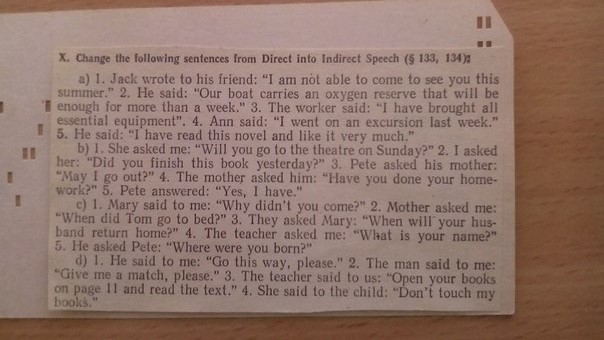 Even though this list is extensive with more than a few incredibly well-known figures, five of the team’s 13 retired numbers standout on simply a different level.
Even though this list is extensive with more than a few incredibly well-known figures, five of the team’s 13 retired numbers standout on simply a different level.
An inaugural inductee into the Pro Football Hall of Fame all the way back in 1963, former Chicago Bears linebacker, fullback and defensive lineman Bronko Nagurski notably spent his entire professional playing career with the heralded NFC franchise. Nagurski lead the entire NFL in rushing touchdowns in 1933. Nagurski finished his Pro Hall of Fame career as a three-time NFL Champion and seven-time All-Pro selection. with three of those nods coming by way of a first-team inclusion. Perhaps most notably, though, the best defensive player in college football is honored by receiving the Nagurski Award each season even to this day. As part of the era of the two-way player, Nagurski could quite literally do it all when on the gridiron.
No. 7 George Halas, Founder / Owner / Head Coach (1922 – 1983)
7 George Halas, Founder / Owner / Head Coach (1922 – 1983) Former Chicago Bears owner and head coach George Halas is the most famed member of this organization as he was not only the founder of the franchise but also a co-founder of the NFL in 1920. He was then enshrined into the Pro Football Hall of Fame as one of the first 17 inductees ever in 1963. In fact, this was an honor he helped start with another Chicago legend in Bronko Nagurski. In addition to serving as the founder of the franchise, Halas was the team’s head coach on four separate occasions from 1922 to 1929, from 1933 to 1942, from 1946 to 1955 and lastly from 1958 to 1967.
Halas, a two-time NFL Coach of the Year, led the Bears to a whopping eight NFL Championships before all was said and done. While Halas is obviously the most revered figure in the history of the franchise considering that there would be no Chicago Bears without him, he is also one of the most highly-regarded figures in NFL history on a league-wide scale — the Pro Football Hall of Fame in Canton, Ohio is even located on George Halas Drive.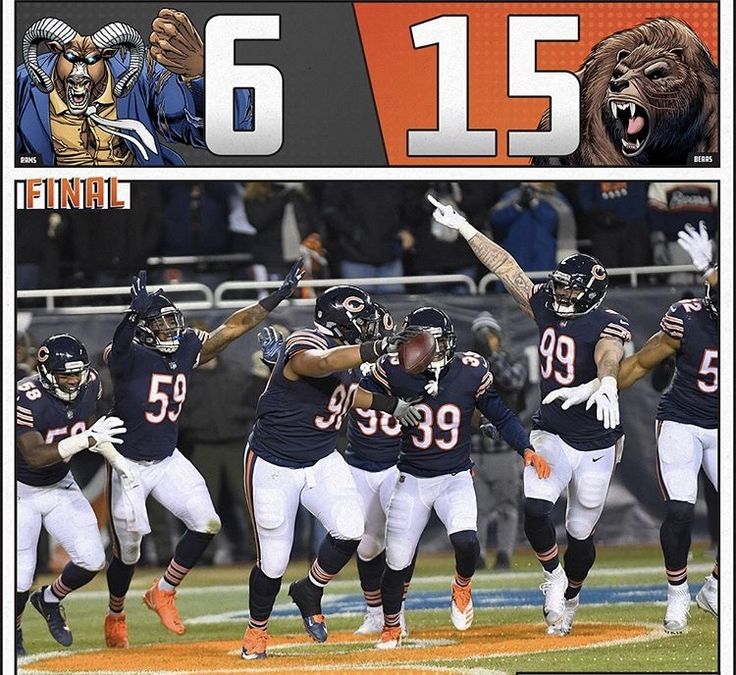
Even after more than 30 years post-retirement from the NFL, Chicago Bears legendary running back Walter “Sweetness” Payton remains the franchise’s all-time leading rusher. He producing a total of 16,726 rushing yards and 110 touchdowns via the ground game over the course of 190 appearances and 13 seasons in the Windy City. Payton has almost double the amount of rushing yards than the No. 2 player on the same list — former Bears running back Matt Forte.
He amassed great success over the course of his Pro Football Hall of Fame career, which was spent exclusively with the Bears. Payton was a Super Bowl Champion, nine-time Pro Bowl selection, seven-time first-team All-Pro, one-time second-team All-Pro, one-time NFL Offensive Player of the Year and the 1977 NFL MVP. He was also selected as the league’s Man of the Year in 1977, an award that is now named after him.
No. 40 Gale Sayers, RB (1965 – 1971)Here’s another legendary running back that spent their entire professional playing career as a member of the famed Chicago Bears. Gale Sayers was no doubt one of the best to ever play the position atop the highest level. Over the course of his time with the Bears, Sayers became a four-time Pro Bowl selection, a five-time All-Pro selection, NFL Rookie of the Year and NFL Comeback Player of the Year. He did this all while leading the entire league in rushing yards not once but twice.
Gale Sayers was no doubt one of the best to ever play the position atop the highest level. Over the course of his time with the Bears, Sayers became a four-time Pro Bowl selection, a five-time All-Pro selection, NFL Rookie of the Year and NFL Comeback Player of the Year. He did this all while leading the entire league in rushing yards not once but twice.
It is also worth noting that Sayers is yet another Chicago bear that has been inducted into the Pro Football Hall of Fame. Because of all of the talented running backs that the Bears have had over the years, the aforementioned Walter Payton included, it seems as though Sayers sometimes gets lost in the mix among the greatest of all time. Nonetheless, there is absolutely no doubt that his time with the Bears and all the statistics and success that came with that stint have him right there toward the top of the heap.
Live and breathe the NFL?
🚨 Get viral NFL graphics, memes, rumors and trending news delivered right to your inbox with the Clutch Newsletter.
One of the most well-known players to ever grace the field as an NFL superstar, longtime Chicago Bears linebacker Dick Butkus is arguably the best overall player in franchise history. He spent his entire professional playing career with the Bears en route to a trip to Canton as a member of the Pro Football Hall of Fame. Butkus’ list of accomplishments as a NFL linebacker is as thorough and impressive as it gets.
In addition to serving as a member of the Pro Football Hall of Fame, the Bears legend was also an eight-time Pro Bowl selection, six-time first-team All-Pro selection, two-time second-team All-Pro selection and a two-time NFL Defensive Player of the Year. Like another Bears great at the linebacker position in Bronko Nagurski, Butkus has a top level collegiate award named after him. Each year, the best collegiate linebacker is rewarded with the Butkus Award.
Remaining Chicago Bears’ Retired Numbers
No. 5 George McAfee, RB / DB (1940 1941 & 1945 – 1950)
5 George McAfee, RB / DB (1940 1941 & 1945 – 1950)
No. 28 Willie Galimore, RB (1957 – 1963)
RECOMMENDED
Jack Deignan ·
Dan Fappiano ·
Gerard Angelo Samillano ·
No. 41 Brian Piccolo, RB (1966 – 1969)
No. 42 Sid Luckman, QB (1939 – 1950)
No. 56 Bill Hewitt, FB (1932 – 1936)
No. 61 Bill George, LB (1952 – 1965)
No. 66 Clyde “Bulldog” Turner, OL / LB (1940 – 1952)
No. 77 Harold “Red” Grange, RB (1925 & 1929 – 34)
Scientists have calculated that bears - predatory mammals - appeared about 6 million years ago. As predators, they are considered cruel and insidious. At the same time, world literature (in fairy tales, epics and lives of saints) knows dozens of stories telling that bears are affectionate animals that can become attached to people and take care of them.
The stories about bears that came to Saints Sergius of Radonezh or Seraphim of Sarov, whose uncovering of his relics is celebrated on August 1, can serve as an illustration. One of the most famous scenes of his icon: St. Seraphim feeds a bear from his hand.
There is no one to confirm or refute this fact of the saint’s biography, but each of us can learn about life side by side with six bears: it’s enough just to arrange a time with the famous circus family of the Yarovs and come to them at the Karhu House (in Finnish, bear), as they humorously call their garden plot.
I confess, it was not me who called, but Alena, the daughter of no less famous circus acrobats-eccentrics Boris and Nina Bezdnin. She is taking me to visit - the families have been friends for a long time.
- Should I buy some honey or something sweet?
In my head, among the mass of all kinds of information, there is a theory I read in childhood that bears love condensed milk, honey, because they have a sweet tooth.
"And non-alcoholic beer," adds Alyona to the list. Noticing the bewilderment on my face, she laughs. "Bears are very fond of beer."
It didn't get to beer. At the entrance to the store there was a bell urging us on: you can’t be late for dinner. Not to the human, to the bear. People would wait, but animals don’t know how to wait: they are used to the fact that dinner at five means exactly at five. It's good to be close.
There is a sign on the gate House of Karhu - you can't mix it up. Uncle Vanya, as Alena calls the Honored Artist of Russia Ivan Yarovoy, waves his hand invitingly: hurry. And we almost run into the hangar, where a small helicopter fleet would be freely located. But here, in a row, there are personal enclosures. And in them - a bear waiting for dinner.
And even when I saw them for the first time, it immediately became clear that everyone has their own character: one waits patiently, the other pretends not to wait at all - why do I need your food. The third impatiently walks around the cage, the fourth, artistically "wrapping his paws", beats against the bars: "Sentry, they are starving, I will soon completely wither, at least let me devour a crust of bread!".
The third impatiently walks around the cage, the fourth, artistically "wrapping his paws", beats against the bars: "Sentry, they are starving, I will soon completely wither, at least let me devour a crust of bread!".
While the family - Ivan, Irina, Andrey and Tatyana - is busy preparing and distributing food, I look around: perfect cleanliness, and there is no smell of wild animals or stale sawdust either. Which is not surprising: Tatyana, distributing croutons the size of a loaf, manages to clean up sawdust around the cages, which wake up on the floor with every movement of the bears.
For dinner, the bears were served porridge with meat, peeled carrots, and apples cut into pieces. Of course, they would have eaten everything, even unwashed, but the Yarovs cannot imagine such disrespect for their animals.
Ivan Terentyevich says in a low voice: all the enclosures were made according to their personal design from a special material. Running past with a shovel and a bucket, Tatyana manages to add that her brother gave money for the last three enclosures: he sold an apartment in Donetsk and gave it away, "because my mother asked him to help me. "
"
Having disappeared, Tanya quickly returns: let's go! We come to huge racks: there are stored supplies in bags, packages, boxes - cereals, carrots, apples. Sawdust stacked separately. It seems to me that you will never eat so much food, but it turns out that the shelves filled from top to bottom with food will last only about two weeks. Tatyana, on the contrary, rejoices: "If there is a supply of food for a couple of weeks, I am calm."
- Where do you get it, it's very expensive?
Irina fits. She has already washed the bowls - the bears eat very quickly, and the women tell together: sometimes they bring something as a gift (recently they donated pasta - not a very healthy food, but once every few days you can), but mostly sawdust on the floor and food come to look for cheaper wholesalers. And you need to go shopping early in the morning in order to return before the breakfast of the animals, and so that Andrey has time for work.
Winning is not always possible: good products are never cheap, but the Yarovye are ready to save on themselves, not on animals.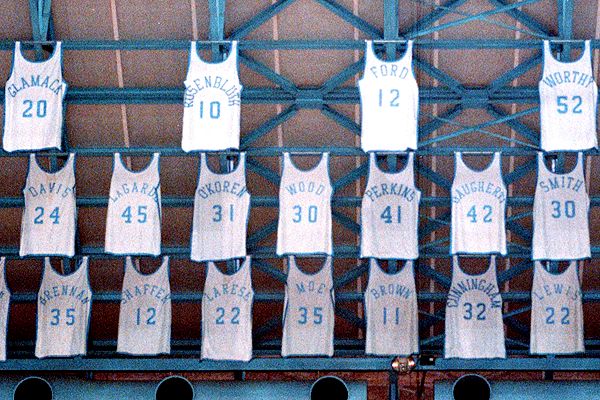 Moreover, for good health, bears need to observe exercise and diet.
Moreover, for good health, bears need to observe exercise and diet.
Finally the sheep are safe, and the wolves, or rather the bears, are full and put to bed. Can we talk. The first, quite logical question: how did it happen that six bears live in a garden plot? The answer sounds bitter:
- Because in 2017 we were fired from the Russian State Circus. Our bears died in 2011, but we restored the number, and we started to go on tour...
Since I don't understand anything, please start from the beginning, from the very first days, in order to be able to tell the story of the Yarovy family of circus trainers.
Ivan Yarovoy joined the circus when he was in eighth grade. He began working as a uniformist, then became an animal care worker in the troupe of Yuri Durov. And when tours began, he met Irina in Yaroslavl.
In 1974, a teddy bear with a broken paw was brought to the Vladivostok circus, where the Yarovs had left after getting married: it had fallen from the ninth floor. The director of the circus gave the baby to Ivan and Irina to be placed in the zoo in the future. But before they had time to cure and transfer the bear to the menagerie, they received the next one. Yes, what!
The director of the circus gave the baby to Ivan and Irina to be placed in the zoo in the future. But before they had time to cure and transfer the bear to the menagerie, they received the next one. Yes, what!
Few people remember that in the same year there was a meeting between the First Secretary of the CPSU Central Committee Leonid Brezhnev and US President Henry Ford. According to the protocol, the heads of state were to exchange memorable gifts, and the Soviet side prepared a small zoo as a souvenir for the president. However, the animals remained in the Union. They were quartered somewhere, and the "Brezhnev bears" were sent to Yarov. The Himalayan bear followed. Thus, the backbone of the number was formed, which was all that was left to come up with, rehearse and start performing with it.
Irina remembers how she and her husband started:
- At first they just watched. And then came Vladimir Zhanovich Tin. His method was different from the rest, and we used his tricks. He said: if you do, rehearse. And this was the only case when we were given floors (special flooring for the arena for bears) - we got the opportunity to rehearse at night. And so trainers do not give their floors to other people's bears.
He said: if you do, rehearse. And this was the only case when we were given floors (special flooring for the arena for bears) - we got the opportunity to rehearse at night. And so trainers do not give their floors to other people's bears.
Taking Tin's tricks as a basis, the Yarovs made them in their own way. Moreover, their bears have learned to perform independently. Irina smiles:
- They practiced, practiced, and then it turned out that they could go out on their own: three or four bears went out without leashes, without sticks and without us.
It didn't happen right away: more than three years passed from the moment Ivan and Irina got the first bear to enter the arena. But with this number, Ivan and Irina ended up in the Directorate of Moscow groups "Circus on Stage" under the direction of V.A. Milirud.
The Springs became famous rather quickly. And, having won the love of the audience, they began to go on international tours. Surprisingly, they constantly "overgrown" with new bears, which remained in the family until an honorable pension.
They went on stage together, then three together with their son: in the circus he went through all the steps from a simple employee to a trainer. And when Andrei married Tatyana Selezneva, an illusionist ballet dancer, she was accepted into the room, after which they all moved together to the Great Moscow Circus, remaining faithful to him for 20 years, until it was time to move on.
Next meant going to the Russian State Circus, with which the Yarovs and bears traveled around the cities of Russia and other countries. Until tragedy struck. On the night of the 29On December 2011, on tour in Ankara, nine out of ten bears of Ivan Yarovoy suffocated in carbon monoxide: there was a short circuit somewhere.
The attraction was restored a year later. Then six cubs appeared in the family at once. They lived in the circus, in the same dressing room with the animals, fed like babies day and night every three hours. The names of the babies were given in honor of the dead bears.
But as soon as the cubs grew up, learned and the trainers began to perform again, the authorities offered to go on tour to Donetsk. The Yarovs refused - Tanya and Andrey had a daughter growing up. They were also afraid of losing the animals again. Remembering the experience, they hardly find words:
- We performed in Donetsk many times, but after 2014 it was scary. Not for myself. When the animals died, we lost everything, as if we died with them. We were then supported by our friends, whom we visited, and they talked to us. I don’t know how we endured and decided to take the kids again. But without them we would not have survived, we would have gone crazy. When they appeared, we went headlong into work.
We plowed non-stop. The men went to restore the cells, did it with their own hands, and my mother and I took care of the kids. When someone looked at us, asking how to help, we answered: play with them. Because there was neither strength nor time to tinker with them, to cuddle.
- There were so many obstacles with China, we thought that we would not go.
Since Irina abruptly changes the subject, please explain what China has to do with the Yarovs. It turned out that after refusing to go on tour, they had to quit. Together with the bears, which were acquired by the family on their own, so no one had the right to take them away, but they did not help with the maintenance of the animals either.
The question arose where to place huge animals - they would not fit in a city apartment. The house where we are sitting did not even exist in the plan - a forest grew in its place. We began to look for where to go, and found out that the Chinese are looking for a room with bears, but they don’t like anyone. “Not really hoping, we sent them a video, and on May 7 we flew away, signing a contract for three years,” Andrei said briefly in a manly way. But they started building a house - for the bears.
Local spectators received the Yarovs' performance with complete delight.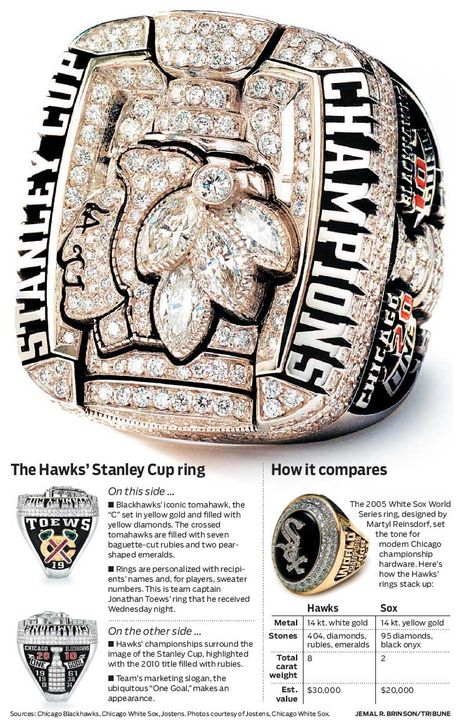 But not for long: a year later, China passed a law completely banning the use of wild animals in the circus, and entry for circuses with animals was closed. Leaving was also difficult.
But not for long: a year later, China passed a law completely banning the use of wild animals in the circus, and entry for circuses with animals was closed. Leaving was also difficult.
- We are so lucky that we left. A little more - and covid began.
Having returned, they managed to work out the tour in Minsk, Simferopol and Kazan, then the pandemic began. Everything was closed. We moved to a newly completed house. Entered - from the furniture one cabinet for performances. It’s time to give up, but the bears can’t explain this: they have dinner on schedule.
In fact, Springs are lucky. When they bought land "by chance" 25 years ago, it never occurred to them to inquire about the status of the settlement. Now it turned out that this is a private subsidiary plot (personal subsidiary plot), where, unlike HOA and SNT, it is allowed to have pets. It is unlikely that the drafters of the law assumed that this would allow six bears to rest in the country. On the other hand, the Yarov family of trainers is the only one in the whole country.
I ask if the neighbors complain. No, they live together. Such problems have never arisen. I grasp the word "such". Were there others? It turns out that Irina really misses the sea. But it is impossible to go on vacation - taking care of six wards requires constant presence from morning to evening. In the couple of hours that we talked, the bears digested dinner, and it's time to clean the cages. And you can’t give such “pets” for overexposure.
But the house is finally furnished. Irina proudly demonstrates the wardrobe, which her relatives donated to her this year. Andrei and Tatiana also recently got a closet. Now all things are on their shelves, and not in boxes next to the curbstone.
On the porch I ask Irina: isn't it scary to be with bears all your life?
- Somehow we didn't think about it. If you are afraid, then do not work with them. There was no fear, we were worried that they would do everything and not screw up. Once they gave me a jump rope, and the bear rushed and hit me in the face - so she walked with a black eye. But the trick had to be restored. I jumped, and she felt that everything was shrinking in me, and she jumped away from me so as not to rush. Then they both calmed down.
But the trick had to be restored. I jumped, and she felt that everything was shrinking in me, and she jumped away from me so as not to rush. Then they both calmed down.
It turns out that if you treat them "humanly", nurse them from childhood, take care of them, life itself will give an answer to the question - are bears dangerous animals or kind ones.
In parting, the trainers Yarovoye speak in unison about a small but important miracle for them. Their house is located in the village of Slobodka, behind it is the village of Nikulino. But when the documents were drawn up, the house was assigned to Nikulin. They are sure that someone did it out of respect for the circus. First of all, to Yuri Nikulin.
Such is the fate of this family - to be with the bears and the circus forever.
On February 27, 2014, Dr. Assad Kotaite, Honorary President of the Council of the International Civil Aviation Organization (ICAO), who had headed this authoritative international aviation organization for 30 years, passed away .
An undisputed authority and visionary strategist, he devoted his entire life to the noble cause of the safe and orderly development of civil aviation throughout the world. His outstanding ability to foresee the development of the global air transport industry has determined the strategy of ICAO for almost half a century and brought this organization to the level of one of the most effective specialized agencies of the UN system. A. Kotaite also made a huge contribution to strengthening the critical role of air transport as an industry that ensures economic, social and cultural progress on a global scale.
Dr. A. Kotaite was born in Hasbay (Lebanon) in 1924. After graduating in law from the French University of Beirut, he received a doctorate in law from the University of Paris. His legendary career at ICAO began in 1953 when he was appointed a member of the Legal Committee, a position he held until 1970. At the same time, from 1956-1970. he was the Lebanese representative on the Council of ICAO and in 1970 was appointed Secretary General of ICAO.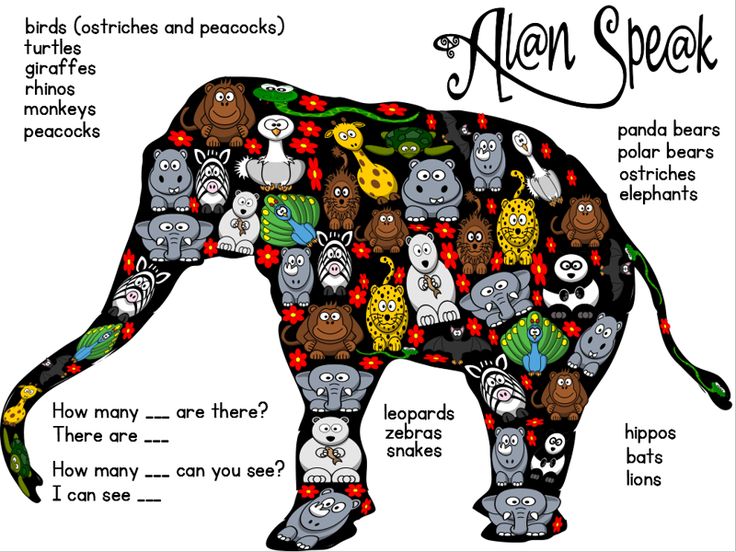 In 1976, he was elected President of the Council of ICAO and was re-elected to this post for eleven consecutive terms before retiring in 2006. His tenure was the longest among senior leaders in the history of the entire United Nations system.
In 1976, he was elected President of the Council of ICAO and was re-elected to this post for eleven consecutive terms before retiring in 2006. His tenure was the longest among senior leaders in the history of the entire United Nations system.
Not without reason, Dr. A. Kotaite considered the Convention on International Civil Aviation of 1944 (Chicago Convention) to be the fundamental document determining the development of international civil aviation, the preamble of which states that international civil aviation can significantly contribute to the establishment and maintaining peace, friendship and mutual understanding among the nations and peoples of the world. Dr. Assad Kotaite is internationally recognized as an advocate for cooperation and dialogue both among ICAO Member States and within the global aviation community. He was deservedly considered a true master of negotiating and reaching consensus on the most pressing and problematic issues of global aviation in a competitive and politically complex environment.
As colleagues who worked at ICAO said, his extensive encyclopedic knowledge, primarily in the field of jurisprudence, captivated the imagination of his interlocutors when, practically without looking at the documents, he quoted the relevant articles of the Chicago and other ICAO conventions, as well as other legal documents.
I was struck by his memory and ability to conduct a dialogue with the interlocutor in such a way that he had the impression that the President was addressing only him and that his opinion was very important to him. And all this happened with an unfailing friendly smile that hid his steely will and adamant character.
Employees of the missions of states accredited to ICAO, members of the Council, as well as employees of the Secretariat of this organization never saw Dr. Assad Kotaite irritated or speaking in a raised voice, while all his wishes or instructions were carried out unquestioningly and on time. He gained indisputable authority not only in the Organization, but also in the aviation administrations of the ICAO member states. Unofficially in aviation circles, he was called "Mr. ICAO".
Unofficially in aviation circles, he was called "Mr. ICAO".
The Soviet Union, on the initiative of the famous Minister of Civil Aviation B.P. Bugayeva became a full member of ICAO in 1970. This is a considerable merit of Dr. A. Kotayt, who personally participated in the negotiations, preparation of the necessary documents and organization of the relevant procedures. Subsequently, he contributed to the recognition of the Russian language as one of the official languages of ICAO and the speedy translation of the main documents of this Organization into Russian, as well as the promotion of Russian specialists to positions in the ICAO Secretariat.
One of the brightest pages in the history of ICAO was the establishment in 1983, with the support of Dr. Assad Kotaite, of the Ad Hoc Committee on Future Air Navigation Systems (FANS), in which specialists from the USSR and, later, the Russian Federation took an active part. As a result of studying and developing various options, the FANS Committee developed a new concept, called "CNS / ATM Systems". For participation in the work within the framework of this Committee, as well as for a number of other achievements and merits that had international recognition, the Chairman of the Interstate Aviation Committee, Doctor of Technical Sciences Tatyana Anodina at 1997 was awarded the highest distinction in the international aviation community - the ICAO Prize. Edward Warner.
For participation in the work within the framework of this Committee, as well as for a number of other achievements and merits that had international recognition, the Chairman of the Interstate Aviation Committee, Doctor of Technical Sciences Tatyana Anodina at 1997 was awarded the highest distinction in the international aviation community - the ICAO Prize. Edward Warner.
For his activities and immeasurable contribution to the development of international civil aviation, Dr. A. Kotaite was awarded many top awards and titles from ICAO Member States and international organizations. In 2013, he became the Laureate of the Prize. Edward Warner for outstanding contribution to the development of global civil air transport.
The author of these lines happened to be present in March 2003 at the 5th Worldwide Air Transport Conference, which was held at ICAO Headquarters (Montreal, Canada). The Russian delegation was headed by Alexander Neradko, at that time First Deputy Minister of Transport of the Russian Federation, head of the State Civil Aviation Service. The scale and authority of the personality of the President of the ICAO Council, Dr. A. Kotayt, was felt during his speech at the opening of the Conference, and when communicating with him on the sidelines. Answering my question, he noted the active role of Russia in the work of ICAO and the high professionalism of our specialists. Their number at that time in the working bodies of ICAO exceeded Russia's informal quota associated with the size of annual contributions, which, first of all, was a recognition of their competence.
The scale and authority of the personality of the President of the ICAO Council, Dr. A. Kotayt, was felt during his speech at the opening of the Conference, and when communicating with him on the sidelines. Answering my question, he noted the active role of Russia in the work of ICAO and the high professionalism of our specialists. Their number at that time in the working bodies of ICAO exceeded Russia's informal quota associated with the size of annual contributions, which, first of all, was a recognition of their competence.
Dr. Assad Kotaite, in the last years of his life, purposefully worked on writing memoirs, in which he tried to summarize his experience gained over fifty years of international diplomatic activity aimed at the orderly and conflict-free development of world aviation. The book was published by ICAO in English in 2013. It contains a lot of factual material, which, no doubt, will be of interest to a wide range of aviation professionals. Given this, and also that 2014 marks the 70th anniversary of the founding of ICAO, the editors of the AviaSoyuz magazine are planning to publish a number of excerpts from the memoirs of Dr.